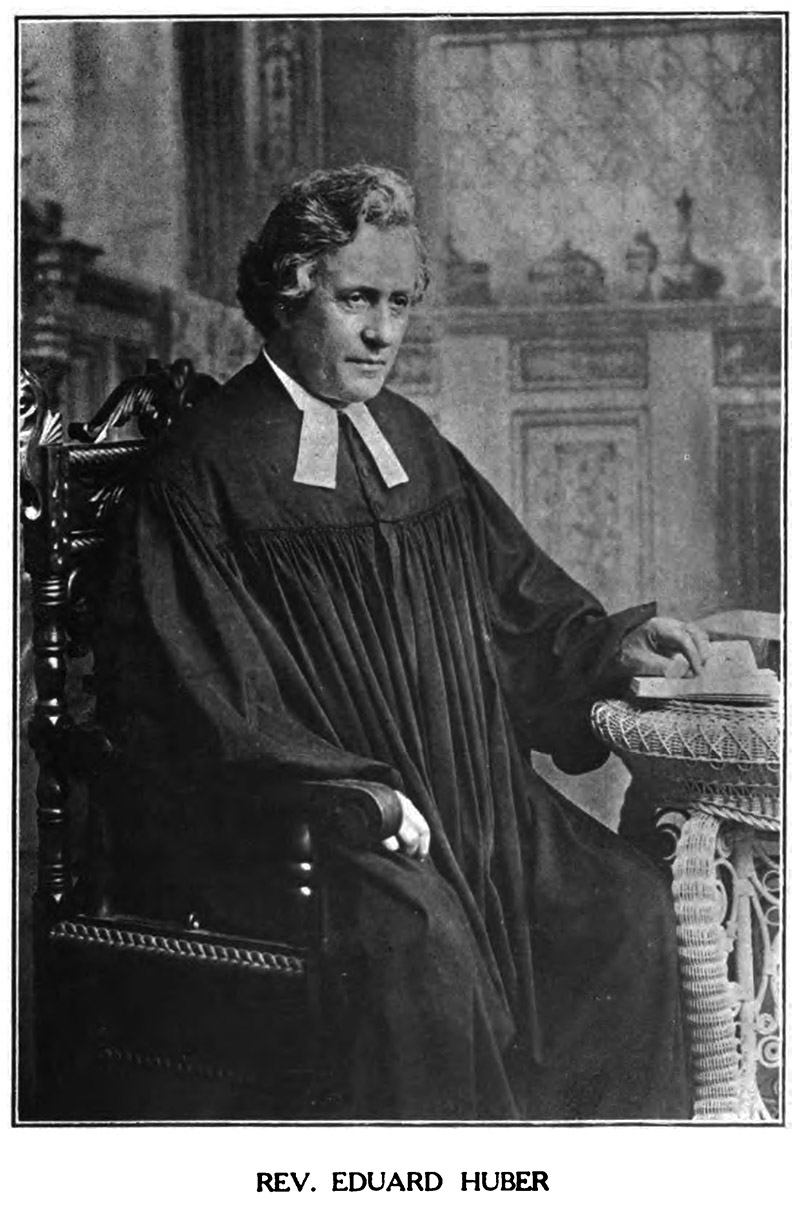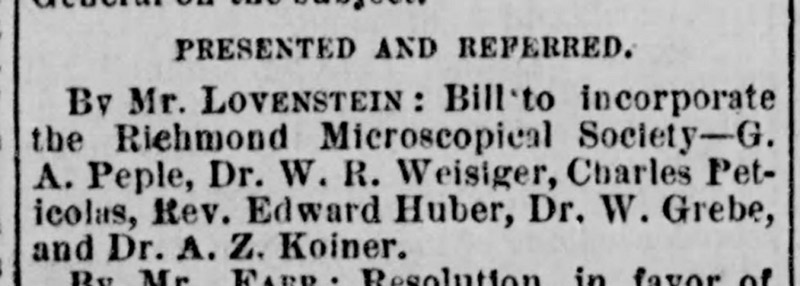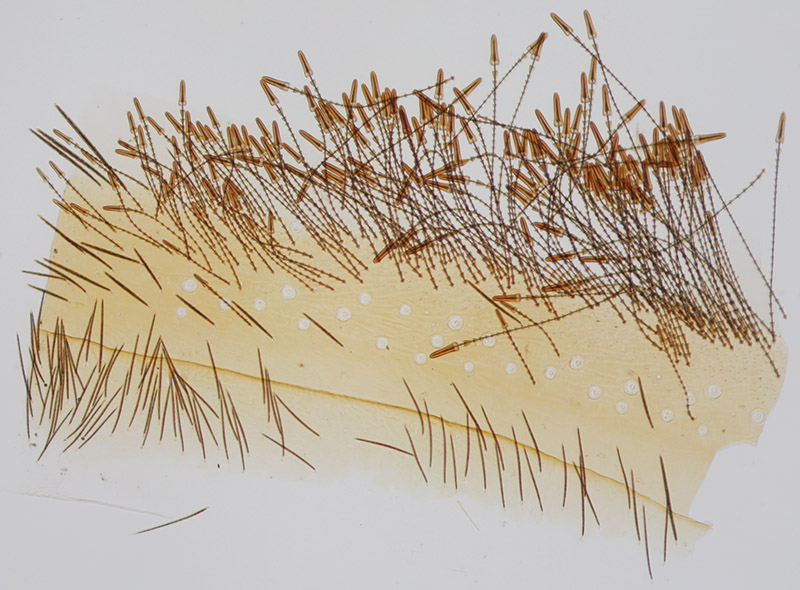
Figure 1. Microscope slides that were prepared by The Reverend Eduard Huber. His Richmond, Virginia address dates them to between 1873 and 1882. He helped found the Richmond Microscopical Society in 1880.
Reverend Eduard (Ed.) Huber, 1845-1906
by Brian Stevenson
last updated December, 2022
As is the case with so many early American microscopists, slides prepared by Eduard Huber are not frequently encountered. Huber’s slides of which I am aware all date from his time in Richmond, Virginia, which was from 1873 through 1882 (Figure 1). Yet he was an active member of scientific societies for more than two decades afterward, and was considered an expert in the study of diatoms and radiolaria. It is likely that more of his preparations survive, but are forgotten in attics and basements. Let’s hope that they are soon found and shared with collectors. His amateur slides are quite well made, and would be welcome additions to collections.

Figure 1.
Microscope slides that were prepared by The Reverend Eduard Huber. His Richmond, Virginia address dates them to between 1873 and 1882. He helped found the Richmond Microscopical Society in 1880.

Figure 2.
Eduard Huber, from a 1906 obituary. He was 61 years old when he died from complications of diabetes.
Eduard Huber was born on June 22, 1845, in Canton Thurgau, Switzerland. His parents, Ulrich and Margaret, were farmers. In May, 1855, nine year-old Eduard and his family moved to the United States. They settled near Milwaukee, Wisconsin, and again took up farming.
As a young teenager, Eduard was sent to study with Lutheran minister William Binney, in Germantown, Wisconsin. The 1860 US census shows the fifteen year-old Eduard as a resident in the Binney household. He later studied at the German-English Academy in Milwaukee.
In the autumn of 1862, at the age of 17, Huber began teaching in the Milwaukee area public schools. He left in the spring of 1865, to study theology at Eden College in Marthasville, Missouri. Huber completed those studies in 1868.
He was then sent to Jefferson City, Missouri, to assist that city’s Evangelical Lutheran congregation. Huber was ordained on January 24th, 1869. He took on leadership of the congregation in August, 1869, after the senior pastor died. He also served as chaplain to the Missouri state legislature, and volunteered as chaplain at the Missouri State Penitentiary.
Eduard married Louisa Cordes in 1870, in Chicago. They had three daughters and two sons.
Huber developed strong ministering abilities, delivering powerful sermons in both English and German. For those reasons, he was sent to Richmond, Virginia in 1873. The U.S. Civil War had ended in 1865, but hostility and resentment of changed conditions pervaded throughout the old Confederacy. This was especially true in Richmond, the Capitol of the former Confederated States. Huber’s main task was to calm the anger and draw the church together.
It is in Richmond that we find the earliest evidence of Huber’s interest in microscopy and other sciences. He was a founding member of the Richmond Microscopical Society, in 1880 (Figure 3). That Society’s existence shows evidence of healed wounds: another founder, diatom expert Charles Peticolas, had served in the Rebel army and was a staunch supporter of the Confederacy.

Figure 3.
Announcement of the formation of the Richmond Microscopical Society, published in the Richmond Dispatch on March 1, 1880.
In 1882, Huber was sent to Baltimore, Maryland. He served St. Matthew’s Evangelical Lutheran Church for the remainder of his life. Among his accomplishments were the introduction of bilingual church services, the establishment of three new congregations, and the founding of the German Evangelical Immigrant and Seaman’s Home. He served for many years as President of the church’s Atlantic District, and as Supreme Judge of the Ministerial Union of his Synod.
Scientifically, Eduard Huber joined the Microscopic Society of Johns Hopkins University, the Maryland Academy of Sciences, and the Society for the Prevention of Tuberculosis. An obituary stated that Huber “was a recognized authority on Diatoms and Radiolaria, having succeeded in making many highly important discoveries in this special field of science”. The preface to the 1904 report of the Maryland Geological Survey included, “The Survey desires especially to thank Rev. Edward Huber, of Baltimore, who has generously placed at the disposal of the Survey his collections of diatoms and radiolaria”. One hopes that those important slides from Huber’s Baltimore days will resurface.
Eduard Huber died on July 9, 1906, from complications of diabetes.

Figure 4.
“Hairs of Dermestes”, prepared circa 1880 by Eduard Huber (see Figure 1).
Resources
Annual Reports of the Society for the History of the Germans in Maryland (1900), Vol. 13, pages 141 and 145
Annual Report of the Society for the History of the Germans in Maryland (1907) Obituary of Reverend Eduard Huber, Vol. 21, pages 90-96
German Marylanders (accessed November, 2016) Rev. Eduard Huber, http://www.germanmarylanders.org/profile-index/Education—Religion
Maryland Geological Survey (1904) Johns Hopkins Press, Baltimore, pages xviii, 451, 453-456, and 459
The Naturalists’ Directory (1885) “Huber, Rev. Ed., 63 N. Broadway, Baltimore, Md. Mic. Ex.”
Richmond Dispatch (1880) Note on the founding of the Richmond Microscopical Society, March 1, page 2
U.S. census and other vital records, accessed through ancestry.com
Weisiger, W.E., and E. Huber (1883) On a parasite on or in the red blood corpuscles of a terrapin, The Microscope, Vol. 3, pages 1-3